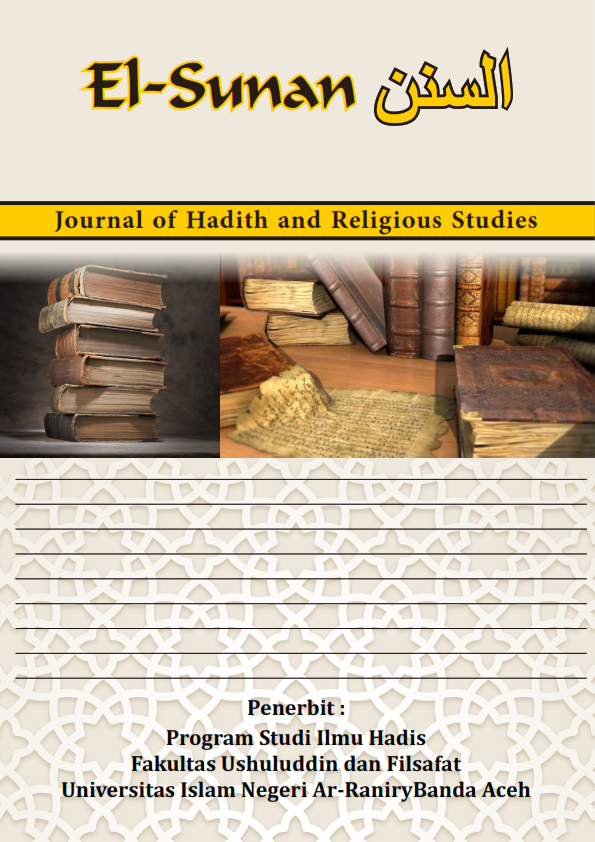Memahami Hadis-Hadis Misoginis dengan Pendekatan Spirit Ayat-Ayat Al-Qur’an
DOI:
https://doi.org/10.22373/el-sunan.v1i1.3456Keywords:
Memahami, Hadis, Misoginis, Al-Qur'anAbstract
A refreshment of the understanding of misogynistic hadiths is absolutely necessary. The reason is not primarily to align with the demands of modern intellectual development, but rather to free the understanding from gender prejudices. As modern Islamic thinkers have demonstrated, the hadiths in question do not actually emphasize superiority or inferiority based on gender, which in classical interpretations have been embellished with explanations and additions that marginalize women. Consequently, the understanding of these hadiths merely accommodates the socio-historical facts that have sidelined women's rights. This interpretation of hadiths becomes a powerful religious tool for disempowering women. This phenomenon is clearly a contradiction. On one hand, the Qur'an strongly emphasizes the values of justice, equality, and freedom. But on the other, the understanding of hadiths has obstructed these fundamental values.
ABSTRAK
Penyegaran pemahaman terhadap hadis-hadis misoginis mutlak dilakukan. Alasannya bukan terutama untuk menyesuaikan dengan tuntutan perkembangan dunia pemikiran modern, melainkan untuk membebaskan pemahaman dari prasangka jender. Seperti telah ditunjukkan oleh para pemikir Islam modern, hadis-hadis yang sebenarnya tidak menekankan superioritas inferioritas atas dasar jenis kelamin yang dalam tafsir klasik telah dibumbui penjelasan dan tambahan yang memarjinalisasikan perempuan. Sehingga, pemahaman hadis bersifat semata-mata mengakomodasi fakta sosiologis-historis yang telah menyingkirkan hak-hak perempuan. Pemahaman hadis menjadi alat religius sangat ampuh untuk tidak memberdayakan perempuan. Fenomena ini jelas merupakan sebuah kontradiksi. Di satu sisi al-Qur`an sangat menekankan nilai-nilai keadilan, persamaan dan kebebasan. Tetapi di sisi lain, pemahaman terhadap hadis telah menghalangi nilai-nilai utama itu.
References
A.J. Wensink, Mu’jam al-Mufahras Li Alfaz al-Hadis al-Nabawuy, Juz I (Leiden: Pustaka Barel, 1965)
Abu Dawud, op.cit, Kitâb an-Nikâh, Bâb Haq al-Zawj ′alâ al-Mar’ah, Juz II, Hadis Nomor.2141,
Ahmad bin Hanbal, op.cit, Juz II, Hadis Nomor 9669, hal. 439 dan juz II, Hadis Nomor 10230
Al-Quran dan Terjemahnya, (Departemen Agama RI, Jakarta, 1991)
Amina Wadud Muhsin, Wanita di dalam Al-Qur’an, terj. Yaziar Raadianti (Bandung: Pustaka Salman, 1992)
Bukhâriy, Shahîh al-Bukhâriy,Juz III dan Juz V, (Beirut: Dar Ibn Katsir, t.t.),
Departemen Pendidikan dan Kebudayaan, Kamus Besar Bahasa Indonesia, (Cet. II, Jakarta: Balai Pustaka, 1990).
Ibn Jarir al-Thabari, Jami’ al-Bayan ‘an Ta`wil Ayat al-Qur`an, Jilid 14 (Beirut: Dar al-Fikr, 1988)
Jhon Echols dan Hassan Shadily, Kamus Inggris-Indonesia (Jakarta: Gramedia, 1986)
M. Syuhudi Ismail, Metode Penelitian Hadis Nabi (cet. I, Jakarta: Bulan Bintang, 1992).
Muh Zuhri, Telaah Matan Hadis Sebuah Tawaran Metodologis, (Cet. Pertama: Yogyakarta, LESFI, 2003)
Muhammad ‘Ajjaj al-Khathib, Ushul al-Hadits ‘Ulumuhu wa Mushthalahuhu (Beirut: Dar al-Kutub al-‘Ilmiyah, 1989).
Muslim bin al-Hajjaj, Kitâb an-Nikâh, Bâb Tahrîm Imtinâ′iha Min Firâsy Zawjiha, Juz II, Hadis Nomor 1436,
Rasyid Ridha, Tafsir al-Manar, Jilid 5, Beirut: Dar al-Fikr, 1973, hal. 68.
Shubhi Shalih, ‘Ulum al-Hadits Wa Mushthalahuhu diterjemahkan oleh Tim Penerjemah Pustaka Firdausn dengan judul :” Membahas Ilmu-Ilmu Hadits”, (Cet. I; Jakarta: Pustaka Firdaus, 1993)
Tirmidzi, al-Jâmi’ ash-Shahîh Sunan at-Tirmidzi, Juz III, (Beirut: Dar Ihya’ al Turats al-‘Arabi, t.t. )
Downloads
Published
How to Cite
Issue
Section
License
- Authors retain copyright and grant the journal right of first publication with the work simultaneously licensed under an Attribution-NonCommercial-ShareAlike 4.0 International (CC BY-NC-SA 4.0) that allows others to share the work with an acknowledgment of the work's authorship and initial publication in this journal.
- Authors are able to enter into separate, additional contractual arrangements for the non-exclusive distribution of the journal's published version of the work (e.g., post it to an institutional repository or publish it in a book), with an acknowledgment of its initial publication in this journal.
- Authors are permitted and encouraged to post their work online (e.g., in institutional repositories or on their website) prior to and during the submission process, as it can lead to productive exchanges, as well as earlier and greater citation of published work.


